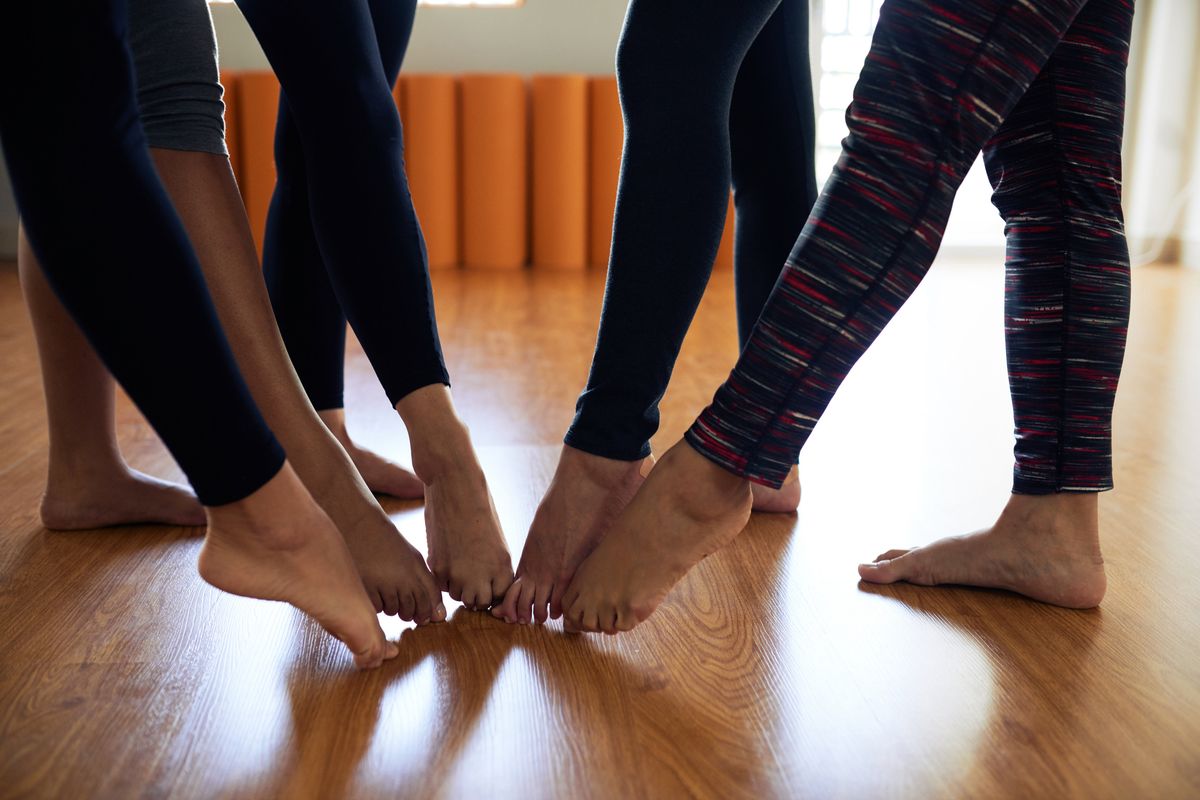
In your class this year, you have a great group of students eager to learn and explore. But, you only meet once a week. What is the best way to choreograph a final dance for the year, given your limited amount of time together? How best to set up the students, and you, for success? Jill Randall, artistic director for Shawl-Anderson Dance Center in Berkeley, California, shares this advice.
The First Big Question
Before launching into a list of strategies and techniques, take 15 minutes and discuss with the director of your school: What is the goal and benefit of a once-a-week class performing in a show? Jot down the pros and cons; consider some great alternatives, including an open class for families at the end of the semester, or your class sharing with another class some combinations a few times a year. Maybe learning a full dance, and performing it onstage, isn’t the ideal end-goal. Plus, do you teach on a Monday or on the weekend? How many classes might your once-a-week students miss this semester due to school holidays and family trips? What will happen if a student is absent and you don’t see them for two weeks at a time?
If the “pros” on the list are robust, here are seven strategies to leverage your creative skills and support your once-a-week students.
Back-Planning
This is a well-known idea from K–12 education. You can call it back-planning or back-mapping. You figure out your goal and your end date. Then, you pull out the calendar and count the number of classes and number of hours to get to that goal.
Decide on the date you want to complete the dance, and determine how many classes are simply about running the dance (not learning new choreography). During spring semester 2018, I taught a once-a-week Level II Modern Dance class for children ages 10 to 12, and I aimed to complete the dance five weeks before the show. This greatly eased the stress, and I already anticipated some absences due to spring school obligations of my students. Plus I taught a Monday class, and I had to factor in the Memorial Day holiday.
Whatever way you describe it, you are parsing out and chunking out the material over the course of several months. If your song is four minutes long, how many seconds of choreography might you accomplish per class? This is an important skill to hone and fine-tune as a teaching artist. Consider 20 to 30 seconds of choreography per class time.
Related to back-planning, determine how much time per class is devoted to the learning of the dance. Be consistent for yourself and for your students. If your class is 60 minutes in length, consider how many warm-ups in the center you want to teach, as well as traveling work across the space. Don’t let the warming up and technique fall to the wayside. Consider 15 to 20 minutes per class for the choreography.
Note-Taking
Once you start to choreograph, words and phrases can serve as memory devices for you and the students alike. Take notes in your teacher’s notebook or on large chart paper on the wall. Take one minute to write down ideas with the students—this will also jog their memory next week. Come up with the words and phrases together. (For example, you might write down keywords for the choreography, such as: “jumping phrase,” “zig zag travel,” “group shape,” “scatter.”)
Videotaping
Now with phones and tablets, we have quick and easy technology to capture the choreography. You can review the video clip from last week by gathering around the iPad; you can post the video on Vimeo or YouTube (set up a password to keep the casual rehearsal videos under wraps). Also possibly ask parents to pop into class to take a video for their own child to review at home during the week.
Sharing Music
As with the videos, sharing the music will offer another opportunity for students to practice at home and feel the music. Send them an mp3 file or send out the YouTube link.
Setting a Modest Length for the Whole Dance
Maybe choreography averages five minutes at your school, but are those five-minute dances with classes that meet twice or three times a week? Carefully decide on the dance length and err on the side of brevity. If your class meets once a week for 60 minutes, a dance 2 1/2 to 3 minutes in length sounds reasonable.
Squeezing in an Extra Rehearsal
Yes, the class meets once a week. But adding one or two extra rehearsals during the final month of the semester can be highly beneficial for all. Talk with your director about this option. Book the space, message the families and confirm what your extra payment will be for you as the teacher.
Combining Combinations
The once-a-week class might not be your opportunity for your most original choreography this year. There is nothing wrong with taking the combinations you taught the group over the semester and creatively piecing them together. Simple choreographic tools like formations, groupings and facings can easily spice up the phrases. Maximize concepts like A-B-A form and canon in the choreography.
The once-a-week class poses some unique challenges for choreography. But you can strategize and plan accordingly to make it a great experience for students and teacher alike.




